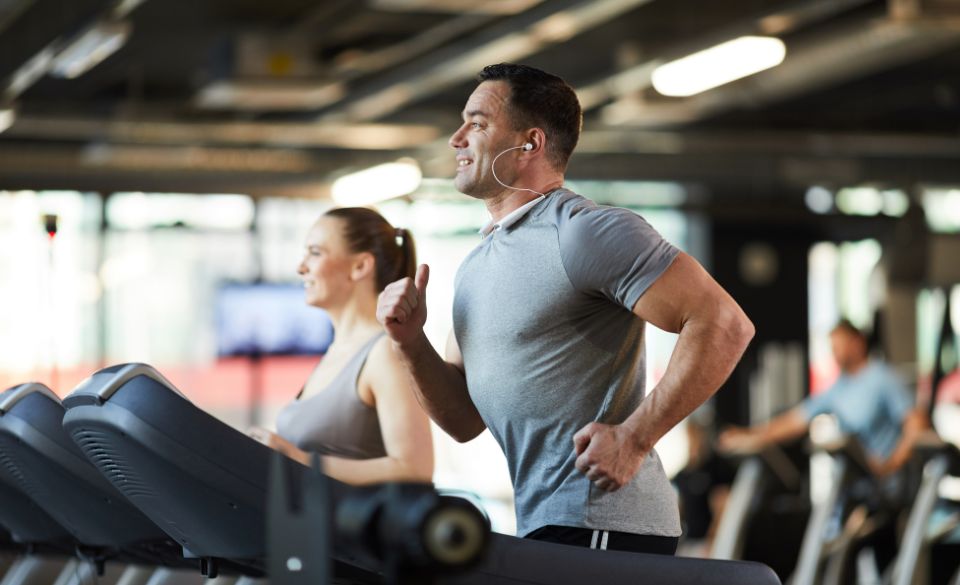
Are Treadmills Accurate for Distance? A Complete Guide
Page Contents
Treadmills are a popular choice for indoor cardio workouts, providing convenience and control over your running environment. However, if you’re a runner who pays close attention to distance, you may wonder if treadmills accurately measure the distance you cover. In this article, we’ll explore the accuracy of treadmills when it comes to measuring distance and discuss factors that can affect the accuracy.
Understanding Treadmill Distance Measurements
Treadmills typically calculate distance based on the number of revolutions of the belt and the belt length. As you run or walk on the treadmill, sensors or algorithms detect the belt movement and calculate the distance traveled. While this method is generally reliable, there can be variations in accuracy depending on several factors.
Factors Affecting Treadmill Distance Accuracy
Belt Tension and Calibration: Treadmills need to be properly calibrated to ensure accurate distance measurements. Incorrect belt tension or calibration can lead to overestimation or underestimation of distance. Regular maintenance and calibration of the treadmill by the manufacturer or a certified technician can help maintain accuracy.
1. Running Form and Stride Length: Your running form and stride length can affect the distance measured by the treadmill. If you have a longer or shorter stride than the average length programmed into the treadmill, the distance calculated may not align with your actual distance covered. Additionally, changes in your running form or stride during a workout can impact the accuracy of distance measurements.
2. Incline and Elevation: Running on an incline can increase the intensity of your workout, but it can also affect distance measurements. When running at an incline, the vertical distance covered is greater than the horizontal distance measured by the treadmill. Therefore, the treadmill may overestimate the distance when running on an incline.
3. Footwear and Surface: The type of footwear you wear and the surface on which the treadmill is placed can also impact distance accuracy. Shoes with thicker soles or cushioning may slightly alter your stride and affect the distance measurement. Additionally, placing the treadmill on a carpeted surface or uneven flooring can introduce slight variations in belt movement and distance calculations.
Validating Treadmill Distance Accuracy
While there can be some discrepancies in distance measurements on treadmills, you can take steps to validate the accuracy and make adjustments as necessary:
1. Use Additional Data: Use additional data sources to cross-validate the distance measured by the treadmill. GPS watches, fitness apps, or running trackers can provide independent measurements of distance that you can compare with the treadmill’s reading.
2. Calibrate Manually: Some treadmills allow for manual calibration, where you input your stride length or perform a calibration run to improve accuracy. Consult your treadmill’s user manual or manufacturer’s guidelines to determine if manual calibration is available and recommended.
3. Focus on Relative Progress: Instead of getting too fixated on absolute distance measurements, focus on the relative progress you’re making. If you consistently run on the same treadmill, the relative changes in distance, duration, and effort can be valuable indicators of improvement and fitness progress.
4. Outdoor Running for Comparison: Occasionally incorporating outdoor runs can provide a helpful comparison to treadmill distance measurements. Running on familiar routes with known distances or participating in organized races can give you a sense of how your treadmill runs align with outdoor running distances.
While treadmills provide a convenient option for indoor running, their distance measurements may not always be 100% accurate. Factors such as belt tension, calibration, running form, incline, footwear, and surface can influence the accuracy of distance measurements. By understanding these factors and using additional data sources for validation, you can make adjustments and maintain a reliable estimate of the distance you cover on the treadmill.
The Importance of Consistency and Tracking Progress
While the accuracy of distance measurements on treadmills is an important consideration, it’s crucial to remember that consistency and tracking progress are key factors in achieving your running goals. Whether the treadmill’s distance measurement is slightly off or not, what matters most is the effort you put in and the progress you make over time.
Consistency in your treadmill running routine is essential for building endurance, improving cardiovascular fitness, and achieving your desired outcomes. Regardless of the exact distance measured, focusing on maintaining a regular running schedule and gradually increasing your duration and intensity will yield positive results.
Tracking your progress can provide a sense of accomplishment and motivation. Even if the distance measurement on your treadmill is not perfectly accurate, you can still observe improvements in your overall performance. Keep a record of your runs, noting the duration, perceived effort, and any other relevant details. Over time, you’ll be able to see how your fitness level has improved, and that progress is what truly matters.
The Role of Personal Calibration
One approach to addressing potential inaccuracies in treadmill distance measurements is to calibrate the machine according to your individual running characteristics. Some treadmills offer manual calibration options, where you can input your stride length or perform a calibration run to fine-tune the distance measurement.
Consult your treadmill’s user manual or reach out to the manufacturer for specific instructions on how to calibrate your machine. Following the recommended calibration process can help ensure that the distance measured aligns more closely with your actual running distance.
Keep in mind that calibration may not be available on all treadmill models, so it’s important to check the capabilities of your specific machine. If manual calibration is not an option, you can still use other methods, such as cross-validating with GPS watches or running apps, to get a more accurate estimate of your distance.
Combining Treadmill and Outdoor Running
Another effective strategy for addressing distance accuracy concerns is to incorporate outdoor running into your training routine. Outdoor running provides a different experience and challenges your body in unique ways. By occasionally running outdoors on known routes or participating in organized races, you can compare the distances measured on the treadmill with the distances covered outside.
Outdoor running allows you to utilize natural landmarks, GPS tracking, or even race organizers’ certified measurements to get a more accurate understanding of your running distance. This comparison can help you gauge the accuracy of your treadmill’s distance measurement and make necessary adjustments.
Moreover, outdoor running provides a refreshing change of scenery, allows you to enjoy nature, and introduces variations in terrain and elevation. Integrating both treadmill and outdoor running into your training regimen can offer a well-rounded approach to your running goals while providing insights into your performance and progress.
Final Thoughts
It’s important to remember that the accuracy of distance measurements on a treadmill may not be as critical for everyone. If your primary goal is to track your progress, improve your fitness, or engage in virtual races or challenges, the relative changes in distance and effort can still provide valuable insights. Consistency in your treadmill workouts and focusing on the overall improvement in your running performance can be more meaningful than getting fixated on the exact distance measurement.
Additionally, it’s worth noting that the accuracy of distance measurements can vary between different treadmill models and brands. Higher-end treadmills often have more advanced sensors and algorithms that result in more precise distance calculations. If accuracy is of utmost importance to you, consider investing in a reputable treadmill with reliable distance tracking features.
Lastly, keep in mind that running on a treadmill offers unique benefits regardless of distance accuracy. It provides a controlled and safe environment for running, allows you to adjust speed and incline settings, and offers protection from weather conditions. These factors can contribute to consistent training and improved running performance, even if the exact distance measurement may have slight variations.
In conclusion, while treadmills provide a convenient and effective way to run indoors, their distance measurements may not always be perfectly accurate. Factors such as belt tension, calibration, running form, incline, footwear, and surface can influence the accuracy of distance calculations. However, by understanding these factors, using additional data sources for validation, and focusing on overall progress and fitness improvements, you can still make the most out of your treadmill workouts. So, hop on the treadmill, enjoy your run, and let the distance be a guide rather than an obsession.



